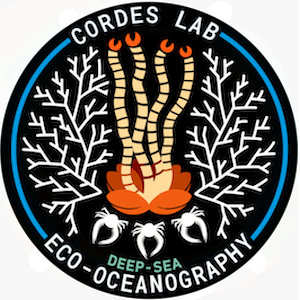ROC HITS Costa Rica Margin Expedition
https://www.youtube.com/watch?v=7X4AZeMYYE0
Check out the Facebook page for more information and pictures: Facebook
Press:
https://schmidtocean.org/new-deep-sea-animal-discoveries-protections-costa-rica/
The deep ocean supplies food, energy, novel drugs and materials, and plays essential roles in the global cycling of carbon, the nutrient replenishment for shallow waters, and the maintenance of biodiversity. Despite the crucial contribution of the deep sea to the larger functioning of global marine ecosystems, there is only a cursory understanding of this vast region and the connectivity among its communities and the rest of the oceans. Cold seeps, active areas of the seafloor where methane and other chemicals are released, are key features along the continental margins worldwide. To characterize how methane seep communities interact with the surrounding ecosystems and vice versa, the research team will study the sphere of influence around methane seeps off the Pacific coast of Costa Rica, a region of the ocean with extremely active methane release and low oxygen levels. This project will map the structure and chemistry surrounding these habitats using a novel 3-dimensional framework, combining biological surveys and transplant experiments along the seafloor with vertical characterizations of the water column. This will include measurements of methane flux into the water column and changes in the overlying carbonate chemistry and oxygen levels that are critical to understanding the effects of warming, oxygen loss and ocean acidification on marine communities. Together, these studies will help evaluate the size of the seep sphere of influence, and also demonstrate the role of these seeps within the deep sea and the greater, global, marine ecosystem.
Chemosynthetic ecosystems are inextricably linked to the broader world-ocean biome and global biogeochemical cycles in ways that scientists are just beginning to understand. This research will identify the form, extent, and nature of the physical, chemical, and biological linkages between methane seeps and the surrounding deep-sea ecosystem. The research builds critical understanding of the structural and functional processes that underpin the ecosystem services provided by chemosynthetic ecosystems. This study will be conducted on the Pacific continental margin of Costa Rica where methane fates and dynamics play a significant role in the regional oceanographic setting. The researchers will use quantitative sampling and manipulative studies within a 3-dimensional oceanographic framework to address the following questions: (1) What are the shapes of the diversity and density functions for organisms of different size classes and trophic position over the transition from the seep habitat through the ecotone to the background deep sea? (2) How do depth, dissolved oxygen concentrations, pH and carbonate ion availability, relative rates of fluid flux, and substrate (biogenic, authigenic carbonate, sediments) alter these linkages and interactions with the surrounding deep sea. Evidence for distinct transitional communities and biotic patterns in density and alpha and beta diversity will be quantified and placed in a global biogeographic context. All of these investigations will occur across biological size spectra: for microorganisms (archaea, bacteria, microeukaryotes), the macrofauna, and the megafauna that form biogenic habitats. Research results will be interpreted in the context of potential effects of global ocean change in the equatorial Pacific to determine how the linkages with the surrounding deep sea will be altered as anthropogenic impacts proceed in the future.
